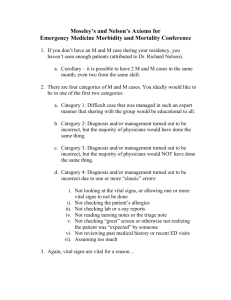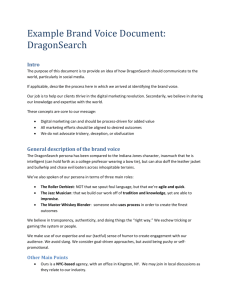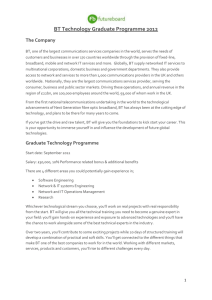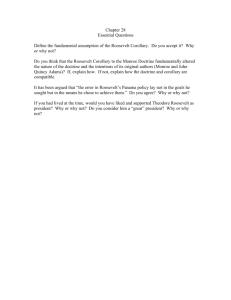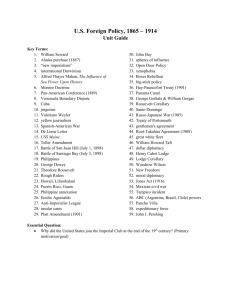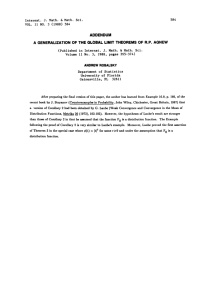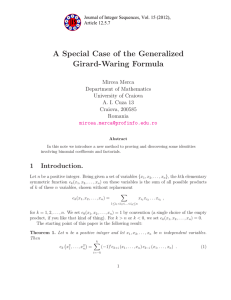Title of Presentation Subhead - Pew Internet & American Life Project
advertisement
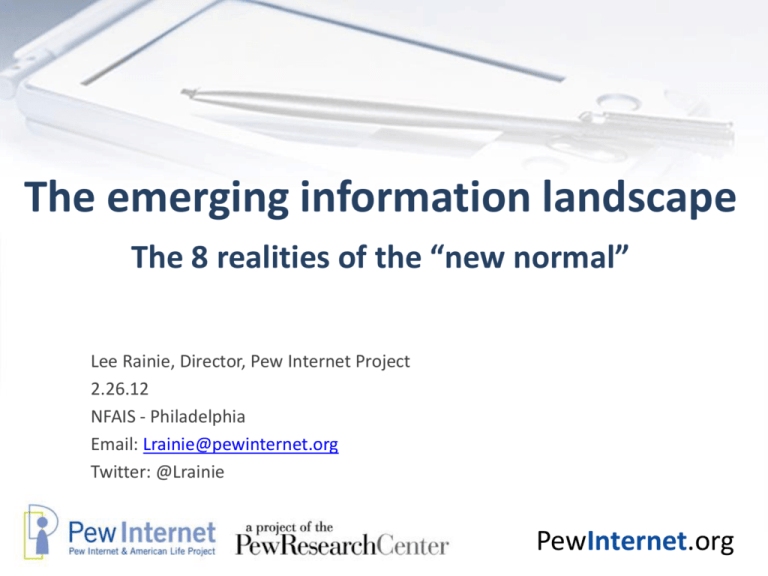
The emerging information landscape The 8 realities of the “new normal” Lee Rainie, Director, Pew Internet Project 2.26.12 NFAIS - Philadelphia Email: Lrainie@pewinternet.org Twitter: @Lrainie PewInternet.org we need a tshirt, "I survived the keynote disaster of 09" “Tweckle (twek’ul) vt. To it's awesome in the "I don't want to abuse a speaker to Twitter turn away from the accident because I followers the audience might see ain severed head" way while he/she is speaking.” too bad they took my utensils away w/ my plate. I could have jammed the butter knife into my temple. 3 New normal – circa 1999 • Non-internet user, and users were … • Male • White • College educated • Dial-up at 32/kbits • Email • Directory and portal search • Chat rooms • Napster • TiVo Digital Revolution 1 Internet (80%) and Broadband at home (66%) Home broadband Home dial-up 80% 71% 70% 60% 66% 50% 40% 30% 20% 10% 0% June 2000 April March March April March March March April 2001 2002 2003 2004 2005 2006 2007 2008 April 2009 May 2010 May August Jan 2011 2011 2012 Networked creators are everywhere (two-thirds of adults; three-quarters of teens) • • • • • • • • • • • 66% of int. users are social networking site users 55% share photos 37% contribute rankings and ratings 33% create content tags 30% share personal creations 26% post comments on sites and blogs 15% have personal website 15% are content remixers 14% are bloggers 13% use Twitter 6% location services – 9% allow location awareness from social media – 23% maps etc. 56% of adults own laptops – up from 30% in 2006 52% of adults own DVRs – up from 3% in 2002 44% of adults own MP3 players – up from 11% in 2005 42% of adults own game consoles 19% of adults own e-book readers - Kindle 19% of adults own tablet computer - iPad Digital Revolution 2 Mobile – 87% 327.6 Total U.S. population: 315.5 million 4X% of adults/2X% of teens own “smartphones” Apps – 50% of adults Digital Revolution 3 Social networking – 50% of all adults 100% % of internet users 85% 86% 80% 83% 70% 71% 76% 67% 61% 60% 52% 48% 49% 51% 47% 35% 40% 33% 25% 20% 0% 9% 8% 7% 6% 2005 2006 4% 1% 2007 18-29 13% 11% 7% 2008 30-49 26% 25% 2009 50-64 2010 65+ 2011 2012 Mean size of Facebook friends network 350.0 300.0 250.0 200.0 150.0 318.5 100.0 197.6 155.7 50.0 85.1 78.4 42.0 0.0 Millennials (18-34) Gen X (35-46) Younger Boomers (47-56) Older Boomers (57-65) Silent Generation (66-74) G.I. Generation (75+) New normal – circa 2012 • • • • • • • • • Broadband Mobile Gender parity Race and ethnicity parity Less SES stratification Less generational variance Email Search Social networking and content creation • Video on demand Eight realities of the new normal for information users and providers New Reality 1) The world is full of networked individuals using networked information Image attribution: Flickrverse, Expanding Ever with New Galaxies Forming Cobalt123 http://www.flickr.com/photos/cobalt/34248855/sizes/z/in/photostream/ New Reality 2) The 4 V’s of information “physics” change Volume Velocity Vibrance Valence / Relevance New Reality 3) People are shifting info platforms New Reality 3) Corollary People use multiple platforms News platforms Americans use on typical day 90 % of adults (18+) 80 78 73 70 61 54 60 50 50 40 30 17 20 10 0 Local TV National network/cable Online Radio Local newspaper National newspaper New Reality 3) Corollary People blend platforms – 59% use online and offline # of news platforms Americans use typical day 70% % of adults (18+) 60% 46% 46% 2-3 platforms 4-6 platforms 50% 40% 30% 20% 7% 10% 0% 1 platform New Reality 3) Corollary People are not platform zealots New Reality 3) People’s encounters with information change Portable Participatory New Reality 3) People’s encounters with information change Personal New Reality 4) Influence is migrating from organizations to networks and new “experts” Traditional experts with new platforms, esp. blogs Amateur experts who are avid contributors – sometimes with tribes New algorithmic authorities New Reality 4) Corollary Social networks are more influential and are differently segmented and layered Sentries New Reality 4) Corollary Social networks are more influential and are differently segmented and layered Evaluators New Reality 4) Corollary Social networks are more influential and are differently segmented and layered Audience New Reality 5) People’s attention zones have changed • Continuous partial attention to media streams • Immersion in deep dives • Info-snacking in free moments New reality 5) Corollary People graze for info all day long New Reality 6) Knowledge containers and displays are changing in the age of the “metaverse” New Reality 7) New divides are emerging based on new tech literacies New Reality 8) The future is uncertain Your map is wrong! New Reality 8) Corollaries The architecture itself Information policies Social norms and attitudes Therefore … • … confront the existential question: What’s our franchise? • … what’s our mobile play? • … what’s our social play (natural alliances)? • … prepare for disruptions … … from “social” actors who aren’t looking for money or who don’t like current business models or credentials … from new analysts in the world of “big data” … from tech companies that see themselves as publishers/creators/curators Thank you!

